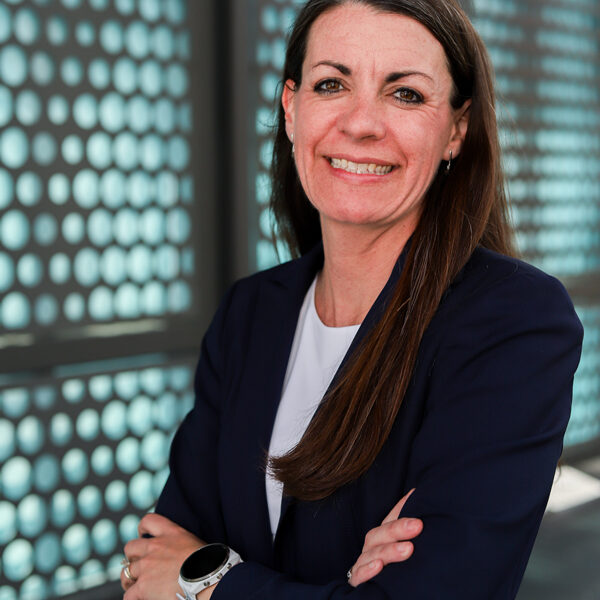By Dr. Sarah Norris, Ed.D, MBA, M.Ed.
The Crisis in the System
The child welfare system is in deep crisis. Children and families engaging with the system are facing more complex and layered trauma than ever before, yet the system was never designed to meet this level of need. As a result, not only are their needs going unmet, they are often experiencing additional harm, compounding the trauma they’ve already endured.
The complexity of children’s needs is increasing and the number of licensed foster homes has been declining for years, leaving children with either an under-resourced placement or no placement at all. Sibling groups are regularly separated and unnecessarily linger in care. Parents often struggle to navigate a system that can feel more punitive than restorative and the professionals working with the families are exhausted.
Families and children are not failing the system, the system is failing them.
Traditional, volunteer-based foster care, no matter how well-intended, is not structured to meet the scale or complexity of today’s challenges. We are at a pivotal moment. A volunteer-based model cannot carry a system in crisis. We must reimagine foster care if we want different results, better outcomes, and a system that heals rather than harms.
An Innovative Model
Crossnore Communities for Children developed Bridging Families© as a direct response to the structural limitations of the current system. This model fundamentally challenges the assumptions of how foster care works best. Rather than presuming foster parents must be volunteers, Bridging Families© positions them as full-time, professional partners working alongside the birth families and their children throughout the reunification process.
This shift is rooted in the core belief that families belong together, and when removal cannot be avoided, every effort should be focused on reunifying as safely and quickly as possible. Bridging Families© is built to help children and families find their way home.
The Beginnings of an Idea
In 2021, the model emerged as a systems intervention rooted in intellectual curiosity and a willingness to question long-standing norms. Its development was grounded in research and practical application, and focused on what’s best for children and families. Very quickly, numerous funders supported the pilot’s initial expansion into Crossnore’s three primary regions. In 2024, the model was adopted by the North Carolina Department of Health & Human Services as the state’s only endorsed professional foster parenting model with the support of a 2-year, $1.8 million state contract, alongside an additional $3.75 million investment from The Leon Levine Foundation.
These investments served as the catalyst to launch the Bridging Families© Institute and to support the expansion of the model statewide.
The Approach
In the traditional system, the relationship between the birth family and foster parents is often strained or non-existent. Bridging Families© takes an approach that fosters connection, mutual respect, and a shared purpose between caregivers and parents.
Rather than navigating the system on their own, families are supported by an integrated team that empowers them along the way. The model removes common structural barriers like fragmented services, inconsistent and limited visitation, and adversarial co-parenting dynamics by embedding professional parenting within a therapeutic, team-driven framework.
Bridge Parents are committed professionals who engage with the entire family throughout their journey in the child welfare system. They become part of an intentional effort to restore families. With full-time compensation, specialized training, and a team-based approach, this model minimizes foster parenting barriers and positions bridge parents to effectively support families on their path to reunification.
This model also provides meaningful support to DSS social workers by functioning as an extension of the case planning team. The Bridging Families© team works closely with DSS, sharing responsibility for family engagement, case planning, and reunification efforts.
What’s to Come
Over the next several years, the Bridging Families© model will expand across North Carolina through the work of the Bridging Families© Institute. The Institute provides training, coaching, consultation, and readiness support to child placement agencies committed to implementing the model with fidelity.
Crossnore’s commitment to systems change is long-term. We are not only responding to a current crisis, we are building toward a future where children experience the foster care system differently. Our focus is not only on program expansion but on policy reform, funding realignment, and a transformation of the norms and assumptions that shape child welfare practice.
The foster care system does not need more band-aids. It needs bold, intentional, long-lasting alternatives. Bridging Families© is one example of what’s possible when we challenge the status quo; however, it cannot stand alone. If we want different results, we must think and act differently. At Crossnore, our hope is not only that other agencies will adopt this model, but that it marks the beginning of a greater, shared commitment to change across the entire system. Systems change work requires more than isolated efforts. A unified, strategic response to the system’s brokenness is what children and families truly deserve.
Bridging Families© is just one step toward home, for children, for families, and for a stronger, more effective child welfare system. True transformation will require a collective commitment to doing what is hard, what is different, and what is right. Children belong with their families. Every step we take toward that truth takes us closer to the future they deserve.
To learn more or inquire about implementation, visit crossnore.org/bridging-families or contact Dr. Dawn O’Malley
Dr Sarah Norris, Ed.D, MBA, M.Ed. is the Chief Program Officer with Crossnore Communities for Children


